This is named after the inventor who became one of the great names in steel-making. In 1855, Bessemer devised his converter; this blasted air into molten pig-iron, allowing the production of steel at one-fifth of the previous cost. Bessemer found West Cumbrian iron ore to be the country’s purest and most suitable for his process. The system was introduced at the West Cumberland Haematite Iron Company’s Oldside works in 1860, soon after Bessemer visited the area and, in 1872, the company began producing steel from its own pig-iron.
An illustration and text about the Billy Bumbley House.
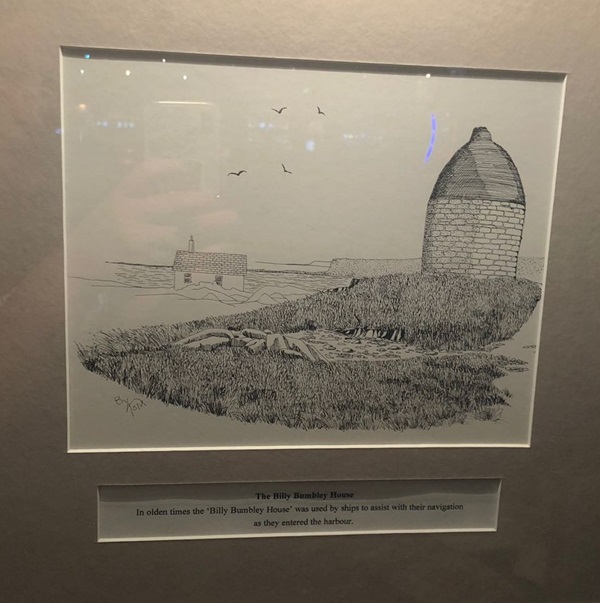
The text reads: In olden times the ‘Billy Bumbley House’ was used by ships to assist with their navigation as they entered the harbour.
An illustration and text about the Lamport Fountain.
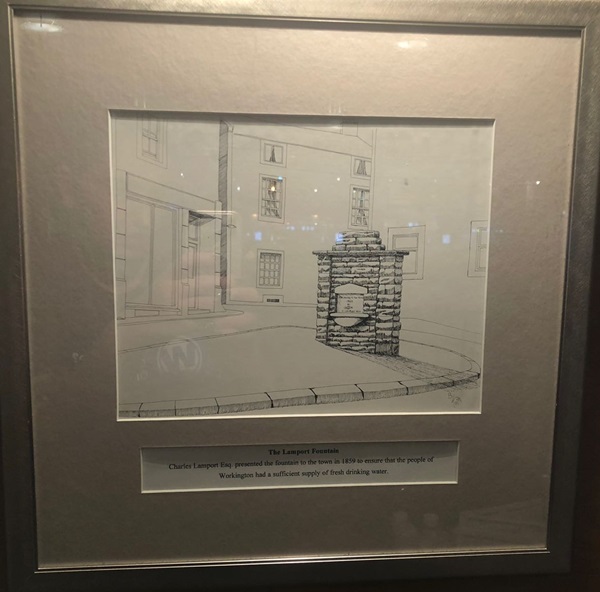
The text reads: Charles Lamport Esq. presented the fountain to the town in 1859 to ensure that the people of Workington had a sufficient supply of fresh drinking water.
An illustration and text about the Theatre Royal.
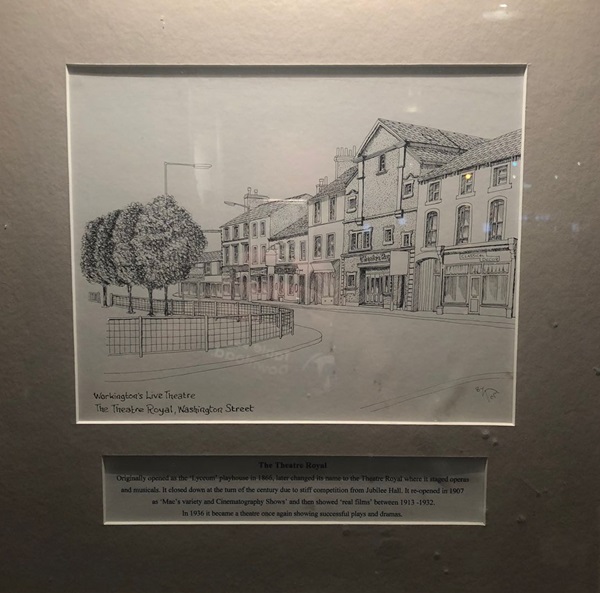
The text reads: Originally opened as the ‘Lyceum’ playhouse in 1866, later changed its name to the Theatre Royal where it staged operas and musicals. It closed down at the turn of the century due to stiff competition from Jubilee Hall. It re-opened in 1907 as ‘Mac’s variety and Cinematography Shows’ and then showed ‘real films’ between 1913-32. In 1936 it became a theatre once again showing successful plays and dramas.
An illustration and text about the old lock up shop and the old post office.

The text reads:
The old lock up house
The former jailhouse was built in 1825 by public subscription in Ritson Street. It is reputed that one drunk who was jailed for the night was supplied drink by a friend on the outside, through a hole in the wall by means of the stem of a church warden’s pipe. In the morning when the prisoner came to be released he was found, to the surprise of the police, to still be drunk.
The old post office
Little is known about the building’s history, it was built sometime around the First World War. Found on the corner of Murray Road and Finkle Street, the building has been transformed into shops since the transfer of the post office to a new premise.
Illustrations and text about the British Steel Corporation Works and the country’s first bus station.
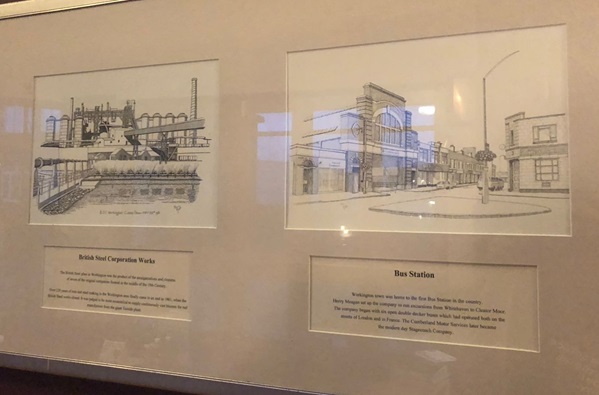
British Steel Corporation Works
The British Steel plant at Workington was the product of the amalgamations and closures of seven of the original companies formed in the middle of the 19th century.
Over 120 years of iron and steel making in the Workington area finally came to an end in 1981, when the British Steel works closed. It was judged to be more economical to supply continuously cast blooms for rail manufacture from the giant Teeside plant.
Bus station
Workington town was home to the first Bus Station in the country. Henry Meagan set up the company to run excursions from Whitehaven to Cleator Moor. The company began with six open double decker buses which had operated both on the streets of London and in France. The Cumberland Motor Services later became the modern day Stagecoach Company.
Photographs and text about the Oxford Cinema.

The text reads: The Graves family took over the building unfinished after a company from Manchester went bankrupt. The family also owned other Workington cinemas. The Oxford (shown in the top photograph) opened on 17 September 1923 with the film Prisoner of Zenda and showed its first sound film, The Singing Fool starring Al Johnson, in 1929.
Film Facts:
Fletcher Christian portrayed in Mutiny on the Bounty was a relation of the Curwen family who were Lords of the Manor in Workington for several centuries. Filmed in Workington was the film The Startled Dan starring Michael Redgrave.
The cinema closed on 10 July 1971, original plans were to make it into the civic theatre, instead it re-opened as the Rendez-Vous nightclub (shown in the bottom photograph). Due to a fire it closed down then became a market and reopened as a twin cinema when the Ritz closed down in 1988.
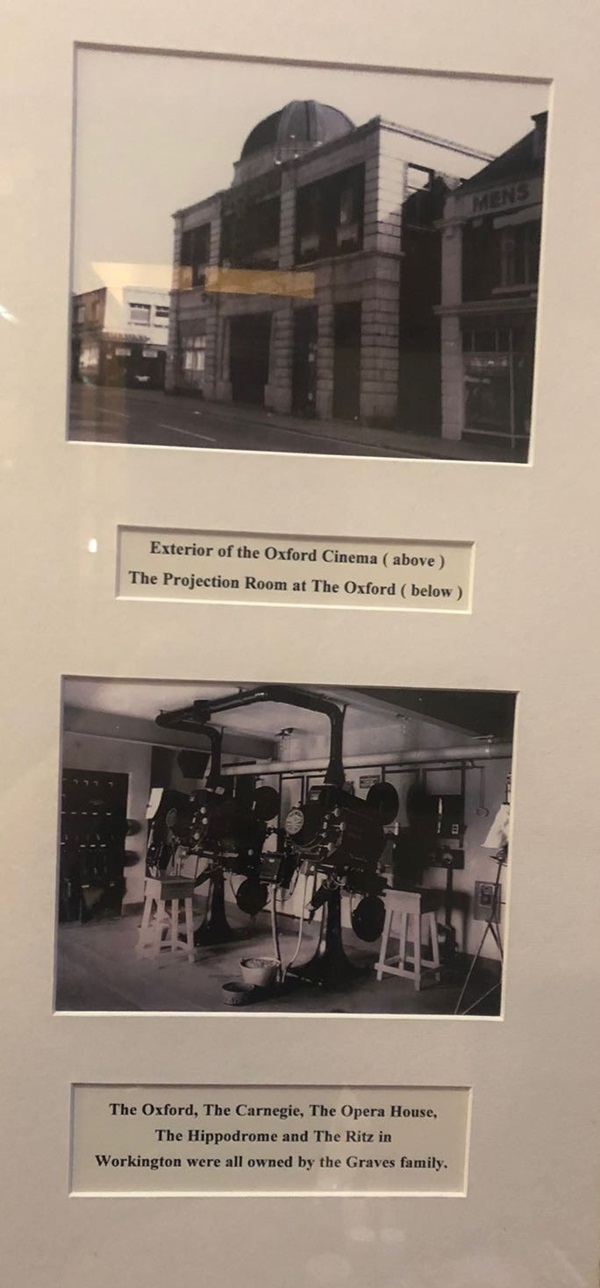
Top: Exterior of the Oxford Cinema
Bottom: The Projection Room at The Oxford (bottom).
Photographs of The Ritz cinema.

Top: Interior of the Ritz Cinema
Bottom: Exterior of the Ritz cinema, Workington.
An old weekly performance sheet in 1940 for The Ritz.
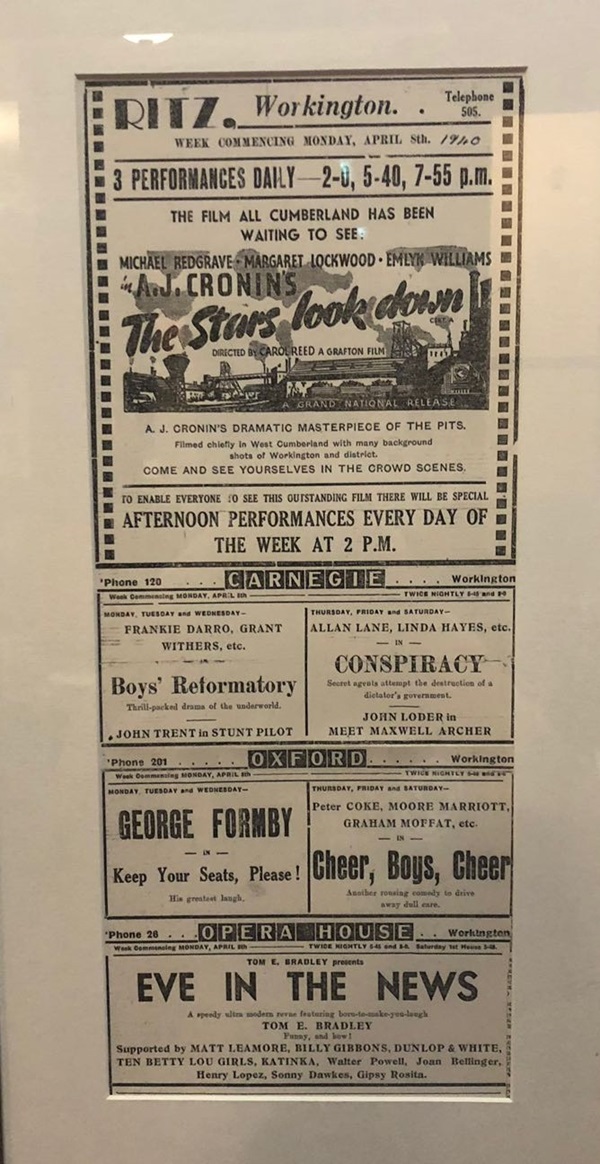
External photograph of the building – main entrance.

If you have information on the history of this pub, then we’d like you to share it with us. Please e-mail all information to: pubhistories@jdwetherspoon.co.uk